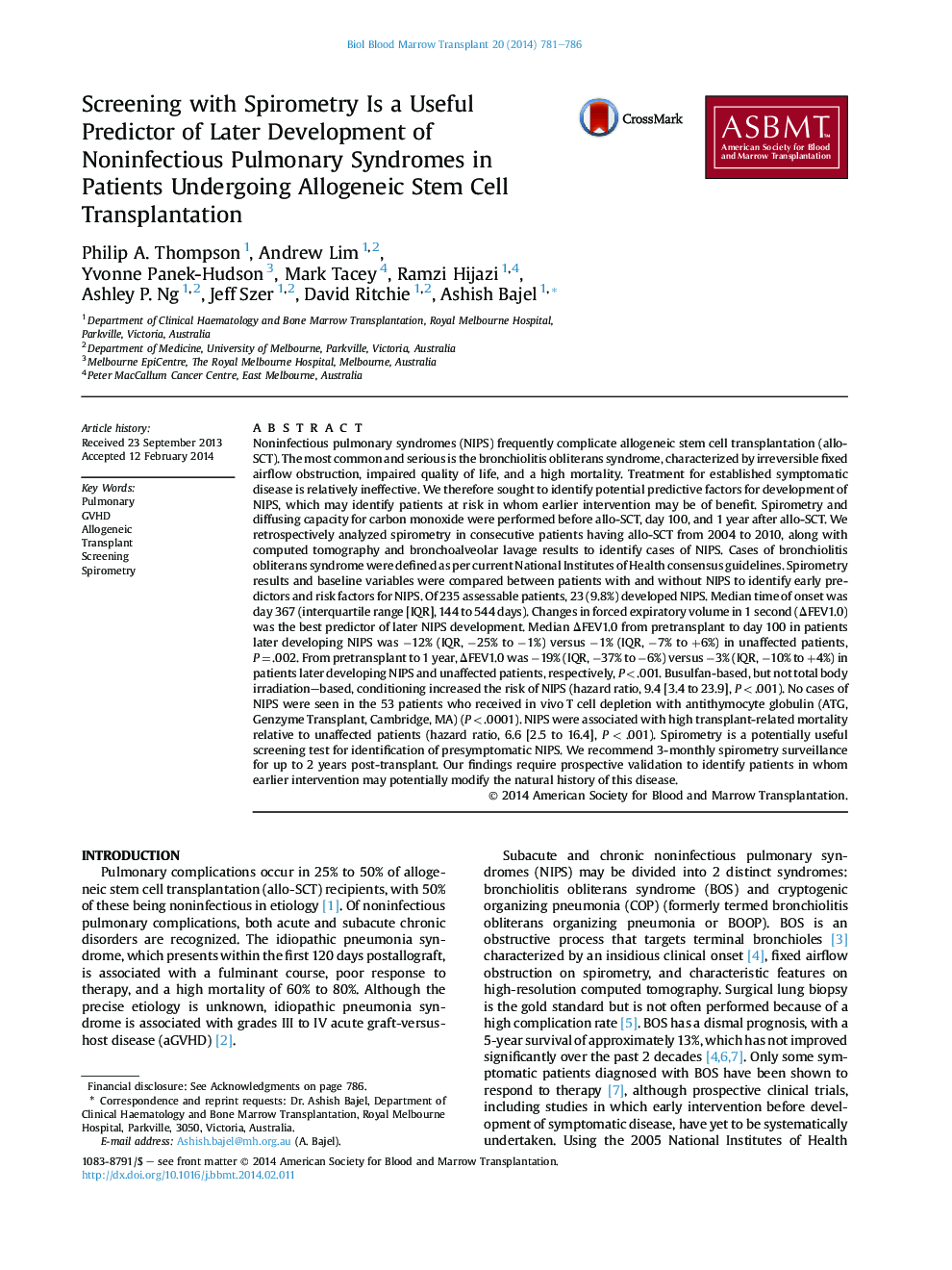| کد مقاله | کد نشریه | سال انتشار | مقاله انگلیسی | نسخه تمام متن |
|---|---|---|---|---|
| 2101937 | 1546279 | 2014 | 6 صفحه PDF | دانلود رایگان |
Noninfectious pulmonary syndromes (NIPS) frequently complicate allogeneic stem cell transplantation (allo-SCT). The most common and serious is the bronchiolitis obliterans syndrome, characterized by irreversible fixed airflow obstruction, impaired quality of life, and a high mortality. Treatment for established symptomatic disease is relatively ineffective. We therefore sought to identify potential predictive factors for development of NIPS, which may identify patients at risk in whom earlier intervention may be of benefit. Spirometry and diffusing capacity for carbon monoxide were performed before allo-SCT, day 100, and 1 year after allo-SCT. We retrospectively analyzed spirometry in consecutive patients having allo-SCT from 2004 to 2010, along with computed tomography and bronchoalveolar lavage results to identify cases of NIPS. Cases of bronchiolitis obliterans syndrome were defined as per current National Institutes of Health consensus guidelines. Spirometry results and baseline variables were compared between patients with and without NIPS to identify early predictors and risk factors for NIPS. Of 235 assessable patients, 23 (9.8%) developed NIPS. Median time of onset was day 367 (interquartile range [IQR], 144 to 544 days). Changes in forced expiratory volume in 1 second (ΔFEV1.0) was the best predictor of later NIPS development. Median ΔFEV1.0 from pretransplant to day 100 in patients later developing NIPS was −12% (IQR, −25% to −1%) versus −1% (IQR, −7% to +6%) in unaffected patients, P = .002. From pretransplant to 1 year, ΔFEV1.0 was −19% (IQR, −37% to −6%) versus −3% (IQR, −10% to +4%) in patients later developing NIPS and unaffected patients, respectively, P < .001. Busulfan-based, but not total body irradiation–based, conditioning increased the risk of NIPS (hazard ratio, 9.4 [3.4 to 23.9], P < .001). No cases of NIPS were seen in the 53 patients who received in vivo T cell depletion with antithymocyte globulin (ATG, Genzyme Transplant, Cambridge, MA) (P < .0001). NIPS were associated with high transplant-related mortality relative to unaffected patients (hazard ratio, 6.6 [2.5 to 16.4], P < .001). Spirometry is a potentially useful screening test for identification of presymptomatic NIPS. We recommend 3-monthly spirometry surveillance for up to 2 years post-transplant. Our findings require prospective validation to identify patients in whom earlier intervention may potentially modify the natural history of this disease.
Journal: - Volume 20, Issue 6, June 2014, Pages 781–786
